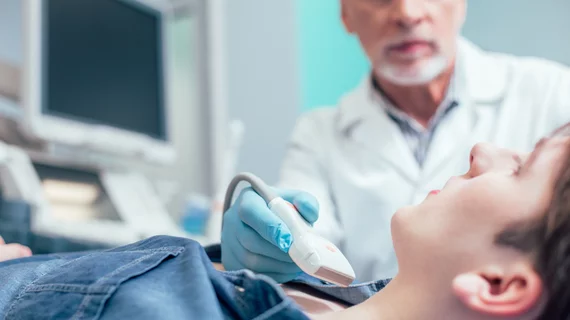Radiologist urges peers to perform ultrasounds, build better bonds with patients
A radiologist is urging peers to consider performing ultrasounds to build bonds with patients and find greater meaning in their work.
Pranjal Rai, MBBS, made his case in a new opinion piece published May 6 in the American Journal of Roentgenology [1]. In India, radiologists typically handle these exams, rather than technologists, with direct discussion of the results an “accepted practice.”
Rai, with the Department of Radiology at Tata Memorial Hospital in Mumbai, handled ultrasounds during his own residency in India. He recalls multiple incidents that exemplify “the empathy that can develop” for radiologists. In one case, a woman with lymphoma arrived with a newly formed lump on her neck and “eyes filled with worry.”
“Relief washed over the patient’s face as I explained the findings. A simple ultrasound examination, dispelling a cloud of worry without pain or needles, solidified my belief in the importance of clear communication and reassurance during an examination,” Rai wrote. “In that moment, the ultrasound became more than a diagnostic tool; it became a bridge to alleviating a patient’s fear.”
Radiologists are unlikely to build this interpersonal connection during MRI or CT. While the current ultrasound paradigm in the U.S. is built around efficiency, the writer wants others to look beyond what’s fastest.
“By performing the examination directly, the radiologist can leverage the environment to foster compassion, improve communication, and address real-time anxieties,” he wrote. “The opportunity for direct patient engagement during the examination can contribute substantially to building trust and rapport with patients navigating challenging cancer diagnoses, in a way not possible even if simply providing the patient with results in-person after a technologist performs the examination. This human element resonating within the ultrasound suite during the examination’s completion serves as a powerful tool for building bonds with patients and improving their experience during their cancer care journey.”
Read the rest of the piece in AJR at the link below.

